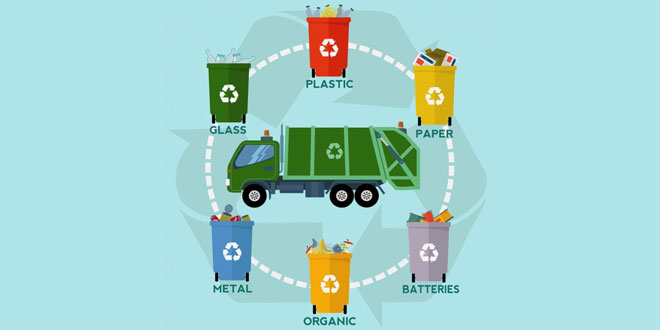Question: Explain one wag of recycling of waste paper.
Answer: One way to recycle the waste papers is as given below:
- Collect old newspapers, magazines, used notebooks, envelopes and tom out used papers.
- Make small pieces of paper of these items and put them in a bucket or any other container submerged in water for one or two days.
- Make thick paste of wet paper by pounding it. Spread the waste paste on the wire mesh fixed to the frame. You can use a large-sized seive in place of a frame.
- Pat the layer of paste gently to make the layer of the paste as uniform as possible. You may spread an old cloth or a sheet of newspaper on the paste to soak up the extra water.
- Remove the layer of paste from the frame and spread it on a sheet of newspaper in the sun. Put some weight on the comers of the newspaper so that these do not curl up.
You can decorate the paper by adding food colours, dried leaves, flower petals or pieces of coloured paper in the paste.
This will help you to get a recycled paper with beautiful patterns on it.
Question: What can we do to reduce overuse of plastics?
Answer:
- Re-use of the plastic bags whenever it is possible to do so without any adverse affects. Neglect re-use of plastic bags for storage or storage of food items to store food items.
- Insist shopkeepers to use paper bags or jute bags to carry goods purchased,
- Do not use plastic bags, especially to store eatables.
- Do not throw plastic bags.
- Don’t fill plastic bags with wastes of plants and animals, such as peels of vegetables and fruits, egg shells, bone pieces of animals, and throw them here and there in open places.
Animals may eat such plastic bags for the sake of food items. Later on these cause death of animals such as cow. buffaloes, dogs and other stray animals. These plastic bags, sometimes suffocate them or choke the alimentary canal which causes indigestion of food and elimination of undigested food. - Do not bum plastic bags and other plastic items because they emit harmful gases.
Question: Municipality provides two types of dustbins for garbage collection. One coloured with blue colour and other with green colour. From following wastes which you will put in the which dustbin?
Plastic materials, metals and glass items, wastes of plants and animals, peels of fruits and vegetables, dried leaves and twigs, remains of meat like flesh and hopes.
Answer:
- The material which can be recycled should be put in the blue dustbin. These materials are: plastic materials, waste metals and glass. It means that the materials which can be recycled and reused should be put in the blue dust bin. These materials cannot rot but can be recycled.
- The wastes of plants and animals, peels of fruits and vegetables, dried leaves and plant twigs, kitchen wastes and other wastes of plant and animal wastes, etc. should be dumped in the green bin or bag. This means that biodegradable are collected in the green dustbin which can be used to prepare compost.
Question: Can you make something useful of these waste material?Powder containers, cold-drink cans, plastic bottles, shoe-box.
Answer:
- Powder container: Their use depends upon their size, shape and the material they are made of. For example
(a) elongated metallic powder container can be used as pen-pencil stand, to grow money-plant etc.
(b) plastic containers can be recycled. - Drink cans: Storing liquids like oils, growing herbaceous plants like money- plants etc.
- Plastic bottles: Storing liquids such as oils and recycling plastic.
- Shoe-box: Making small red-cross box, storage pen-pencils and other small articles.
 Class Notes NCERT Solutions for CBSE Students
Class Notes NCERT Solutions for CBSE Students




I love these answers.